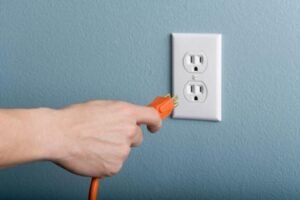
Electrical outlets play a vital role in our homes, silently providing the necessary power to ensure that various electrical devices function smoothly, making our daily lives much easier. Understanding the different types of electrical outlets can help us make informed choices and ensure the safe and efficient use of electricity. Read on as we will delve into the various types of electrical outlets, gain insights into their practical applications, and offer essential safety precautions when handling them.
Standard Outlets:
The standard outlet is the most common type of electrical outlet , also known as a duplex or two- prong outlet. These outlets feature two vertical slots and can accommodate two parallel flat blades. Standard outlets are designed for devices that require 120 volts of power, such as lamps, TVs, and small appliances.
Ground Fault Circuit Interrupter (GFCI) Outlets:
GFCI outlets are vital for areas exposed to moisture, such as bathrooms, kitchens, and outdoor spaces. These outlets incorporate advanced safety mechanisms that detect imbalances in electrical current and instantly shut off power to prevent electric shocks.
USB Outlets:
With the rising relevance of USB-powered devices, USB outlets have gained popularity among homeowners. These outlets are designed with built-in USB ports, eliminating the need for separate adapters or chargers. This convenient feature optimizes the use of available outlet capacity in residential settings.
Specialty Outlets for Specialized Needs
- Isolated-Ground Outlets: These outlets are designed to minimize electrical noise and interference for sensitive equipment commonly used in hospitals, laboratories, and audio/video
- Split-Wired Outlets: Split-wired outlets feature two separate circuits within a single outlet, allowing independent control of devices. They are often used for lamps with built-in nightlights or in rooms where individual control is desired.
- Switch and Outlet Combinations: These outlets combine a switch with the socket, offering a convenient way to control lighting or other devices without the need for additional wiring.
- Weatherproof Outlets: Outdoor areas require specialized outlets to withstand exposure to the elements. Weatherproof outlets are moisture and dust-resistant, ensuring safe electrical connections for outdoor lighting, power tools, and other devices.
Now that you have a good understanding of the different types of electrical outlets, the next is to be aware of the safety measures when dealing with them. The following are some essential safety tips to keep in mind:
- Remember to switch off the power before plugging or unplugging any devices from an
- Do not force power plugs into outlets that do not
- Avoid using damaged outlets, frayed cords, or
- Refrain from touching outlets with wet hands or metal
- Schedule regular inspections conducted by a licensed
It’s easy to underestimate the significance of electrical outlets in our everyday routines. However, knowing the various types of electrical outlets enable us to make informed choices, prioritizing safety and efficiency in our homes. Remember, even a basic understanding of the outlets that provide electricity to your home can significantly impact you.
